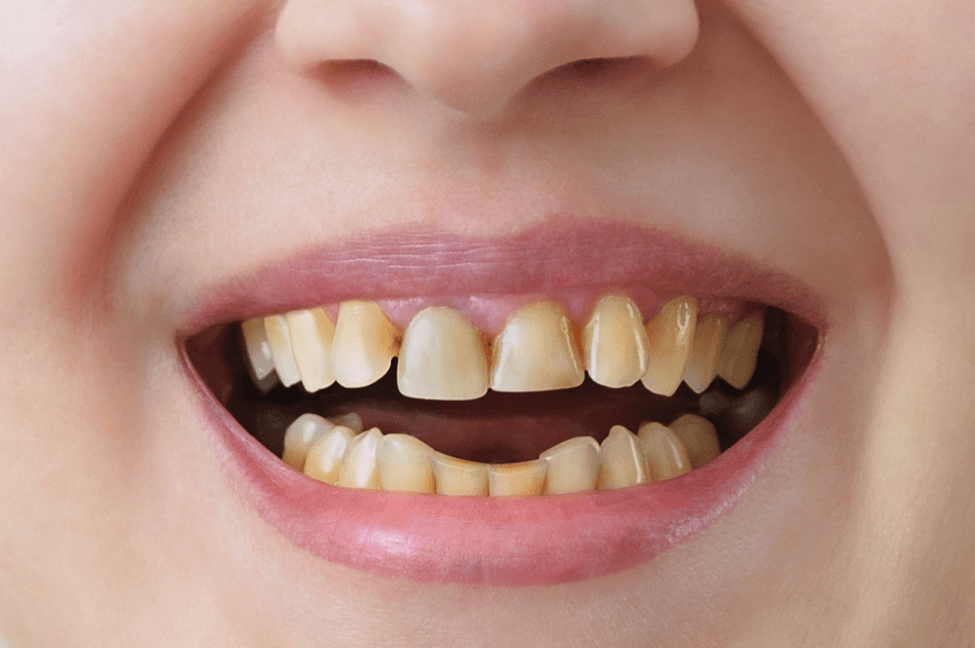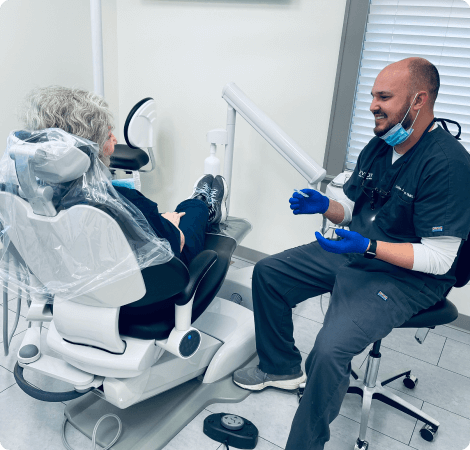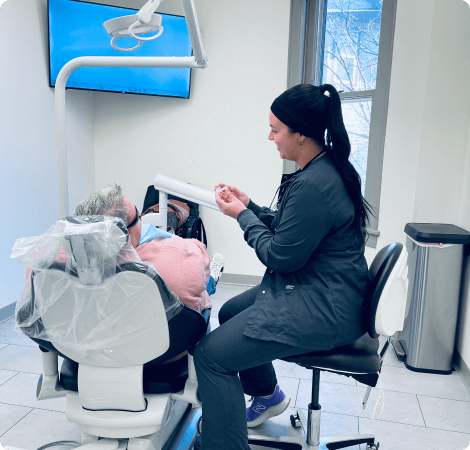What Vitamin Deficiency Causes Yellow Teeth?

Natural teeth aren’t necessarily as white as TV commercials suggest. It’s unfortunate that such an image has given rise to the misconception that white teeth are the embodiment of peak dental health, while any teeth with a hint of yellow—which is well within their natural hue—are often seen as unsightly.
That said, being too yellow can indicate an underlying health issue. In today’s blog post, we’ll explore one of several causes: certain vitamin deficiencies, and the ways you can enjoy a whiter (or less yellowish) smile. Before that, let’s discuss how teeth turn intensely yellow in the first place.
The Tooth Discoloration Process
Tooth discoloration can be extrinsic or intrinsic. Extrinsic yellowing of teeth occurs when the enamel or the outermost layer of your teeth gets stained by consuming certain foods and drinks (e.g., coffee, red wine, dishes with tomato or soy sauce). This is usually resolvable through regular brushing or, for deep-seated extrinsic stains, professional teeth whitening in New Albany.
However, things get more complicated when intrinsic discoloration is the culprit. It points to changes in the teeth’s composition, primarily the thickness of the dentin or the middle layer between the enamel and cementum. The dentin often appears as a pale yellow, but other colors like light brown or gray are also possible.
Unlike extrinsic stains, intrinsic teeth discoloration occurs much deeper into the teeth, affecting both the enamel and dentin. This causes teeth to appear yellower or more discolored than they usually should. Also, intrinsic discoloration is permanent and can’t be managed through surface treatment methods such as brushing and oral cleaning.
The Vitamins Your Teeth Need
Vitamins may be associated with boosting your immunity, but they play a significant role in improving dental health. Existing research explains that vitamin deficiencies lead to health problems such as dental enamel defects and gingivitis. But which of these leads to teeth discoloration?
Researchers at the Strossmayer University of Osijek in Croatia found that a lack of Vitamin A and D in one’s diet can lead to a disorder called amelogenesis imperfecta. Characterized by the formation of discolored enamel as teeth develop, this rare disorder is caused by a genetic mutation that’s either inherited or as a result of vitamin deficiency.
It’s already a well-known fact that Vitamin D plays a vital role in maintaining dental health due to its ability to facilitate the absorption of calcium and phosphorous, which are crucial for tooth development. However, how it performs said role has yet to be fully understood.
One paper by researchers in India states that Vitamin D binds with specific receptors in the body that genes use to initiate the production of proteins involved in tooth enamel development, known as amelogenins. If the genes can’t express these proteins due to Vitamin D deficiency, it can lead to mutations.
The same can be said for Vitamin A, particularly its active form, retinoic acid. While most studies point to an excess of retinoic acid leading to amelogenesis imperfecta, they also concur that a lack thereof is just as adverse.
Given the effects of vitamin deficiency on tooth color, it’s safe to say that it’s a form of intrinsic discoloration. Dentists have some workarounds for such cases, like dental crowns or veneers. However, as amelogenesis imperfecta can also trigger oral health issues other than tooth discoloration, proper oral hygiene and a balanced diet are still necessary.
Getting Enough Vitamins

The body can’t produce Vitamin A, but it can convert provitamin A carotenoids from foods into said nutrient. Carotenoids are pigments that give fruits and vegetables certain colors, namely orange, red, and yellow. This means you can get Vitamin A from carrots, mangoes, oranges, and sweet potatoes, to name a few. Other sources of Vitamin A include specific types of fish, dairy products, and eggs.
|
Age |
Vitamin A Recommended Amount (mcg RAE*) |
Vitamin A Upper Intake Limit (mcg RAE*) |
| Birth to 6 months |
400 |
600 |
| 7 to 12 months |
500 |
|
| 1 to 3 years |
300 |
|
| 4 to 8 years |
400 |
900 |
| 9 to 13 years |
600 |
1,700 |
| 14 to 18 years |
900 (male), 700 (female) |
2,800 |
| Adults |
3,000 |
*Micrograms of retinol activity equivalent
Source: Office of Dietary Supplements
Meanwhile, the body synthesizes Vitamin D when a certain type of cholesterol known as 7-dehydrocholesterol absorbs ultraviolet-B (UVB) radiation from sunlight. Experts state that the most efficient time for Vitamin D synthesis is between noon and mid-afternoon, which is also the hottest part of the day. Fortunately, they also say that ten minutes in the sun is enough to supply adequate Vitamin D to the body. It’s for this reason that Vitamin D is often referred to as the sunshine vitamin.
Vitamin D is abundant in fatty fish such as mackerel, salmon, and tuna. Additionally, most milk sold in the U.S. is fortified with around 3 mcg/120 IU of the nutrient per cup. Take note that dairy products like cheese and ice cream are typically not fortified.
|
Age |
Vitamin D Recommended Amount (mcg/IU*) |
Vitamin D Upper Intake Limit (mcg/IU*) |
| Birth to 6 months |
10/400 |
25/1,000 |
| 7 to 12 months |
38/1,500 |
|
|
1 to 3 years |
15/600 |
63/2,500 |
|
4 to 8 years |
75/3,000 |
|
| 9 to 70 years |
100/4,000 |
|
|
71 years and older |
20/800 |
*Micrograms/International Units
Source: Office of Dietary Supplements
Getting your daily dose of vitamins won’t be an issue as long as you have a well-rounded diet, as most foods mentioned above are also rich in other nutrients that are essential for good dental health. These include Vitamin B12, Vitamin C, and Vitamin K.
Wrapping Up
Yellow teeth aren’t necessarily a sign of dental problems, but when surface treatments like teeth whitening options don’t work, they can point to something worse. A lack of Vitamin A and D in one’s diet, among other forms of nutritional deficiencies, can lead to yellow teeth growing much yellower. Ensure you’re getting enough essential vitamins every day and practice proper oral hygiene to maintain good oral health and your pearly whites. Don’t forget your regular dental visit, too.






